When we mention “incense”, we often think of incense burned at the altar or in Buddhist rituals.
However, in Japan, Incense is also used to purify space, relax the mind and scent clothes, etc.
There are many types of incense with different shapes, characteristics and uses.
This article shares the 3 main types of incense in Japan, along with basic ways to enjoy them.
In addition, at the end of the article there are suggestions about brands famous scents and some traditional Japanese scents so you can find and buy them more easily.
What is Japanese incense made from?
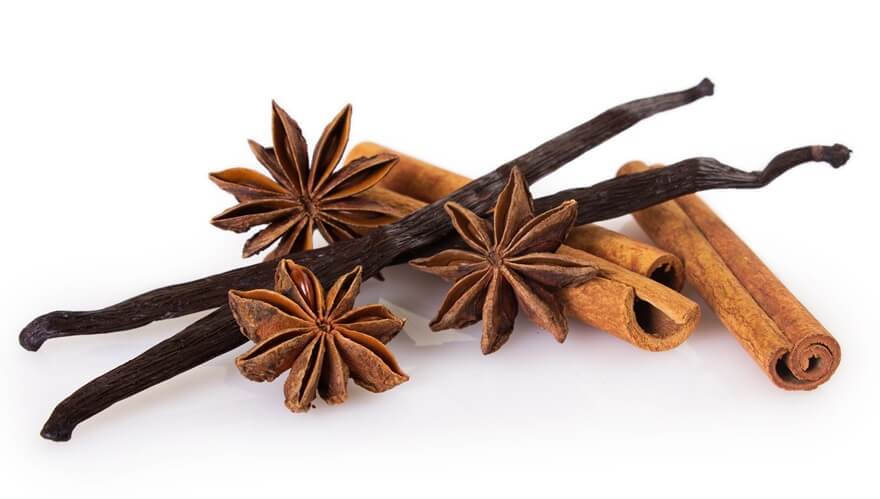
Japanese incense has two main ingredients: raw materials and natural flavors.
Raw materials are necessary ingredients to help incense burn and help bind to maintain the shape of incense.
Raw materials are usually Tabunoki bark powder or charcoal powder, and accounts for a large proportion of incense.
Natural flavorings help determine the aroma of incense.
The most common are herbs such as sandalwood, cinnamon and cloves, etc.
Expensive high-end incense often uses aromas from agarwood or Kyara wood.
Recently, fragrance oils extracted from roses and citrus have also become popular.
Types of Japanese incense
Japanese incense is divided into 3 types: direct burning incense, indirect burning incense and non-burning incense.
Direct burning incense
Direct burning incense is a type of incense that requires you to burn the top of the incense for the fragrance to be released.
Directly burned incense has 3 main shapes: stick, cone and spiral.
Stick shaped incense
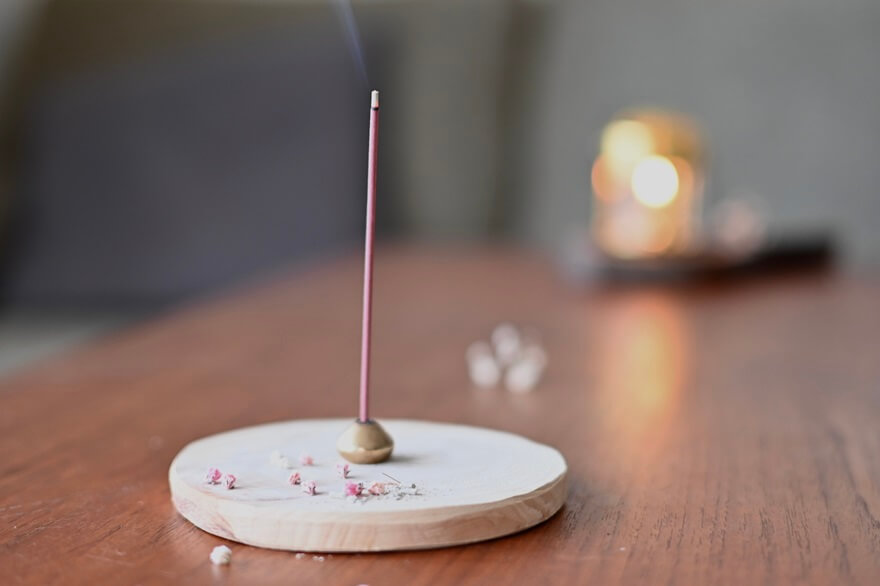
Stick-shaped incense in Japanese is called “Senkō” (線香).
There are many types of stick-shaped incense with different diameters and lengths, so the burning time is also different.
The popular type used for households has a length of about 7cm ~ 13.5cm, equivalent to a burning time of about 15 minutes ~ 30 minutes.
If you want to adjust the burning time, you can also break the incense into small pieces.
Cone shaped incense
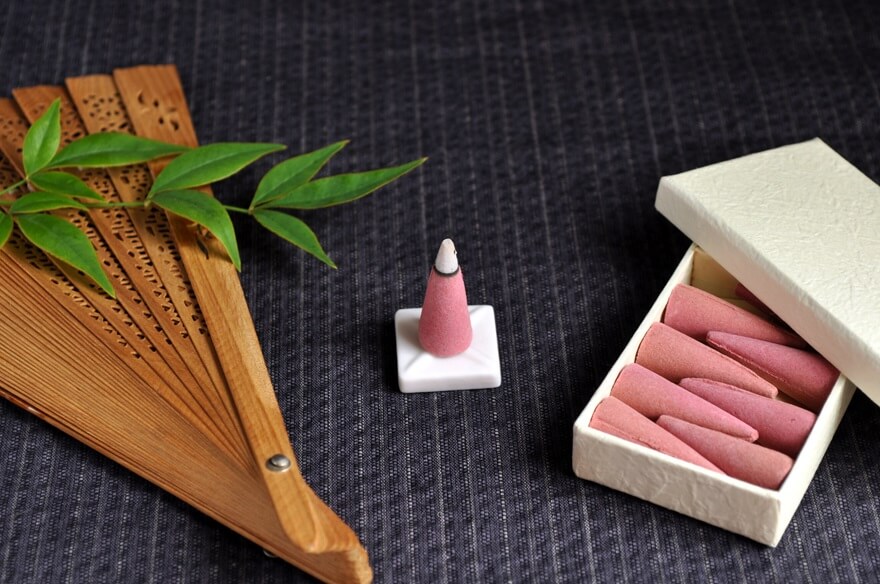
Cone shaped incense in Japanese is called “Kōngata no Okō” (コーン型のお香).
This is a common type of incense due to its ease of use and lack of ash dispersal.
With its cone-shaped design, the burning area gradually increases, resulting in a more intense fragrance, making it suitable for those who want to enjoy the scent quickly within a short period.
Spiral incense
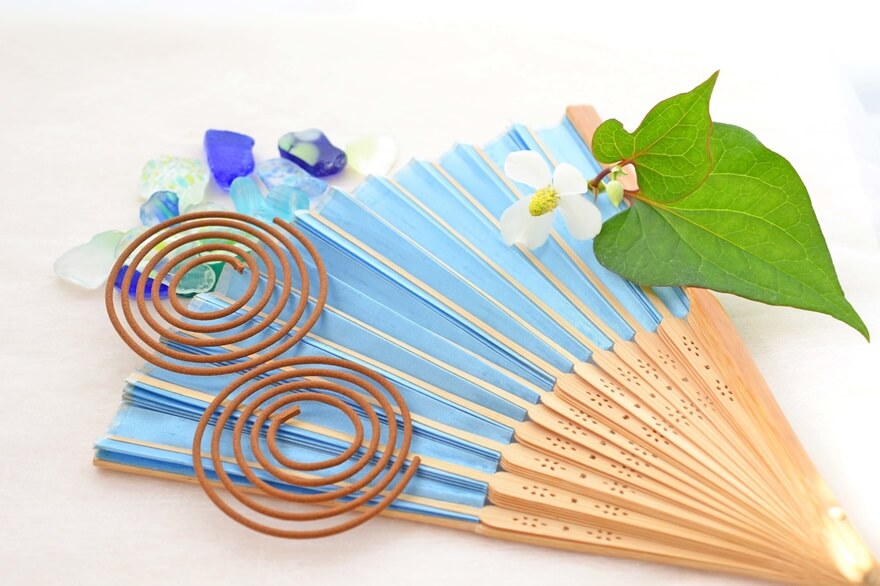
Spiral incense in Japanese is called “Uzumakigata no Okō” (渦巻型のお香).
The characteristic of spiral incense is that it burns for a long time and spreads fragrance in large spaces.
Some Ryokan and restaurants in Japan often burn this type of incense at their entrances so that whenever guests arrive, they are greeted with a pleasant fragrance.
How to enjoy “direct burning incense”
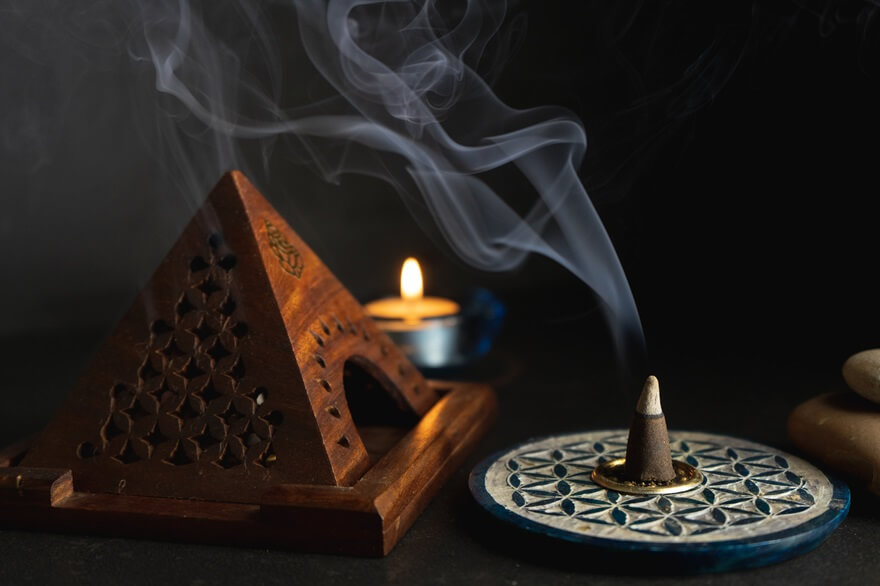
Burn the top of the incense and place it in an incense plate (香皿) or in an incense burner (香炉).
The plus point of the incense plate is its diverse designs and low price. However, depending on the shape of the incense (stick, cone, spiral), it may not be possible to use the same type of incense plate.
If you want to enjoy many types of incense with different shapes, I suggest you use an incense burner.
It is not necessary to buy an expensive incense burner, you can replace with a heat-resistant bowl.
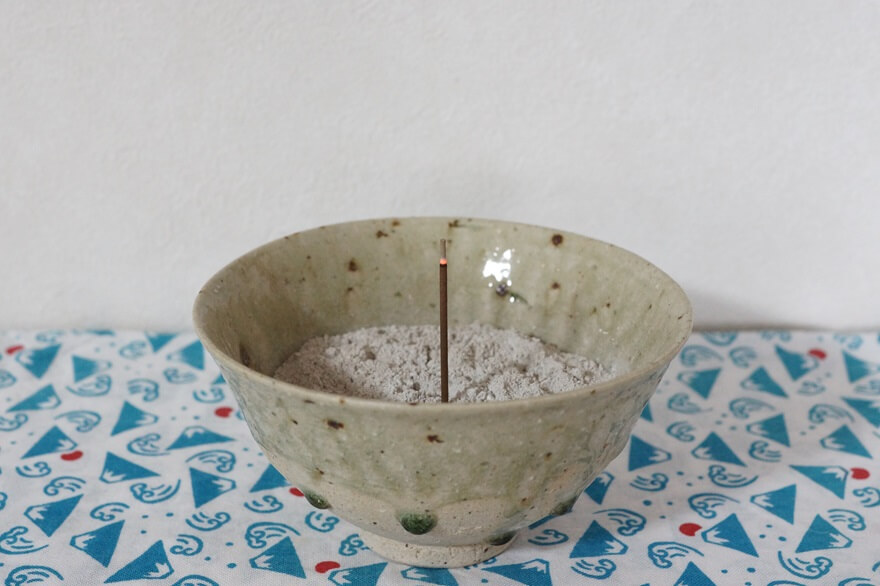
Indirect burning incense
It is the type of incense where you need to place the incense on warm ashes for the fragrance to radiate. This type of incense is mainly used in Sadō (Japanese tea ceremony) and Kōdō (Japanese traditional incense-smelling ceremony).
To enjoy indirect burning incense, specialized tools are needed. Though it takes some effort, the subtle fragrance makes indirect-burning incense popular among those who have a special love for scents.
Indirectly burned incense has 3 main forms: Aromatic Wood (Kōboku), Kneaded Incense (Nerikō) and Pressed Incense (Inkō).
Aromatic Wood (Kōboku)
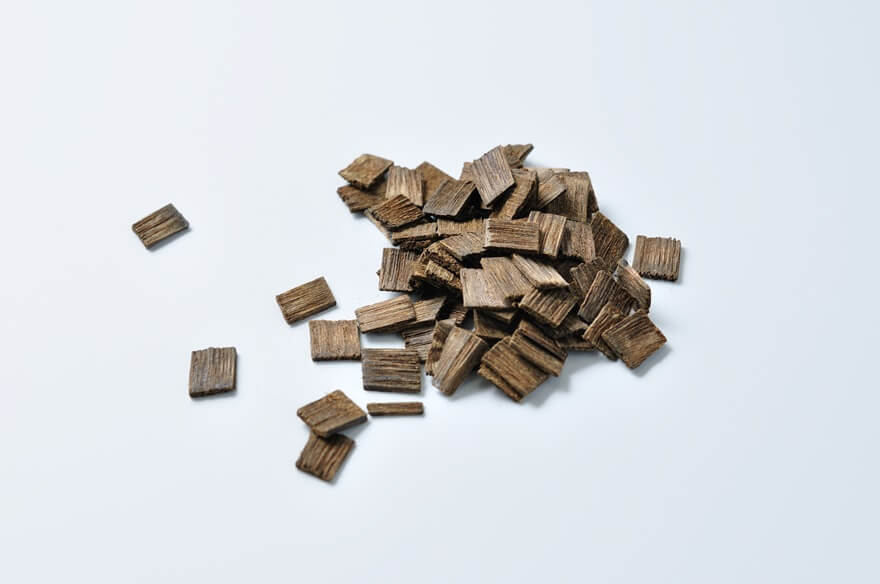
Aromatic Wood in Japanese is called “Kōboku” (香木). Aromatic woods such as Kyara wood, agarwood, and sandalwood are cut or minced into small wood chips.
Kneaded Incense (Nerikō)

Kneaded Incense in Japanese are called “Nerikō” (練香).
Nerikō is made by mixing ingredients such as agarwood powder, honey, etc.
During the Heian period, the aristocracy often used Nerikō to scent their clothes. Each person has a unique scent and that scent also symbolizes their status.
Pressed Incense (Inkō)
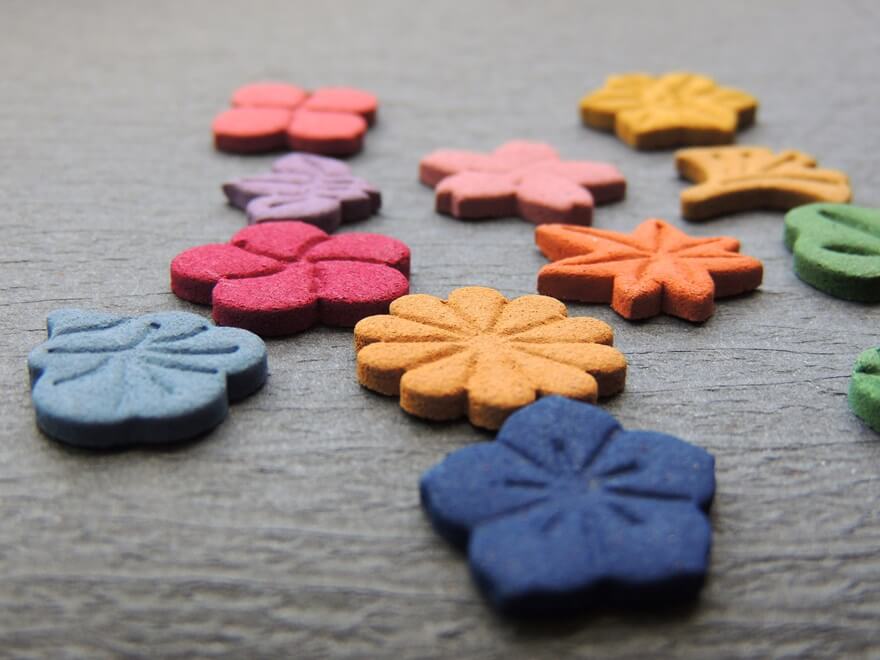
Pressed Incense in Japanese is called “Inkō” (印香).
Inkō is made by mixing fragrant powders together, putting them into molds, hardening, and pressing them into many shapes such as cherry blossoms, apricot blossoms, maple leaves, etc.
With its cute color and shape, Inkō looks no different from candy.
How to enjoy “indirect burning incense”
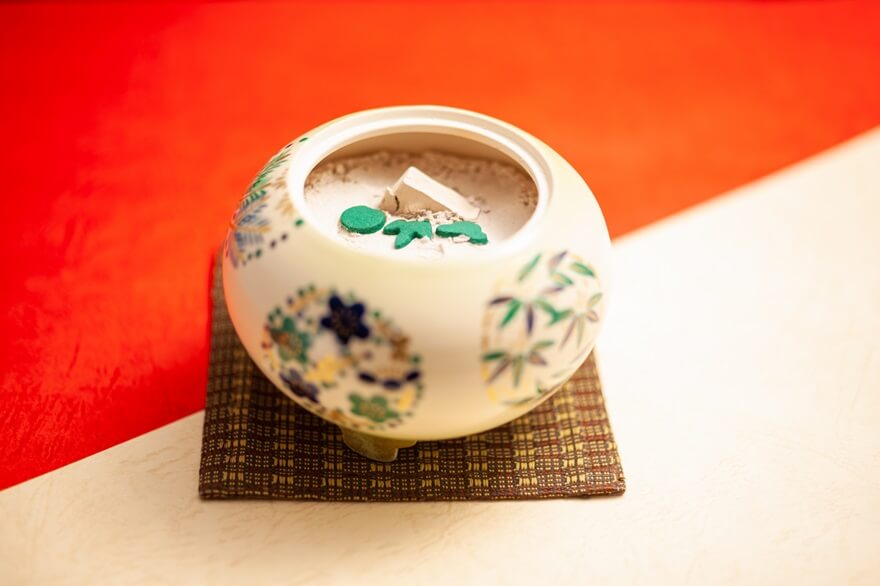
There are 3 ways to enjoy indirect burning incense:
- Use an electric incense burner (電子香炉): no need to prepare ash and charcoal, this is the simplest way to enjoy.
- Burn in the Soradaki style (空薫): bury a piece of burned charcoal in the ash, then place incense next to it. The heat of the ash will help release the scent.
- Burn in the Monkō style (聞香): incense burning ritual in Kōdō, conducted solemnly with a specialized set of tools.
Non-burning incense
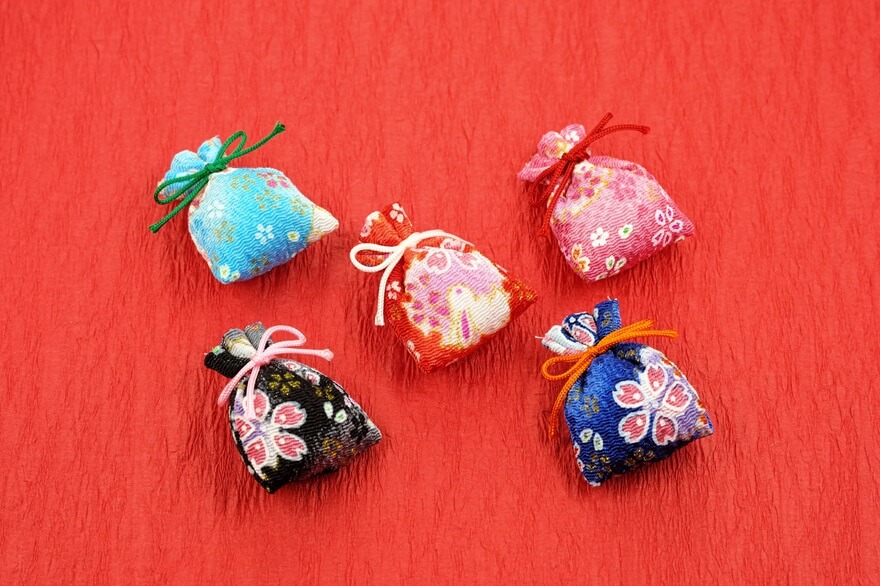
It is the easiest type of incense to use, can radiate fragrance even at normal temperatures.
The most common type of non-burning incense is the scent sachet, known as “Nioi-bukuro” (匂い袋) in Japanese.
The incense are chopped, mixed and packed into cloth bags. You can enjoy the scented bag by putting it in your bag or wardrobe, or placing it in your car, for example.
A less common but also popular type of non-burning incense is “Fumi-kō” (文香), which means scented paper.
Japanese people often put Fumi-kō in a letter or business card box so the recipient can also enjoy the fragrance.

Fumi-kō of the Shoyeido brand
Where to buy Japanese incense?
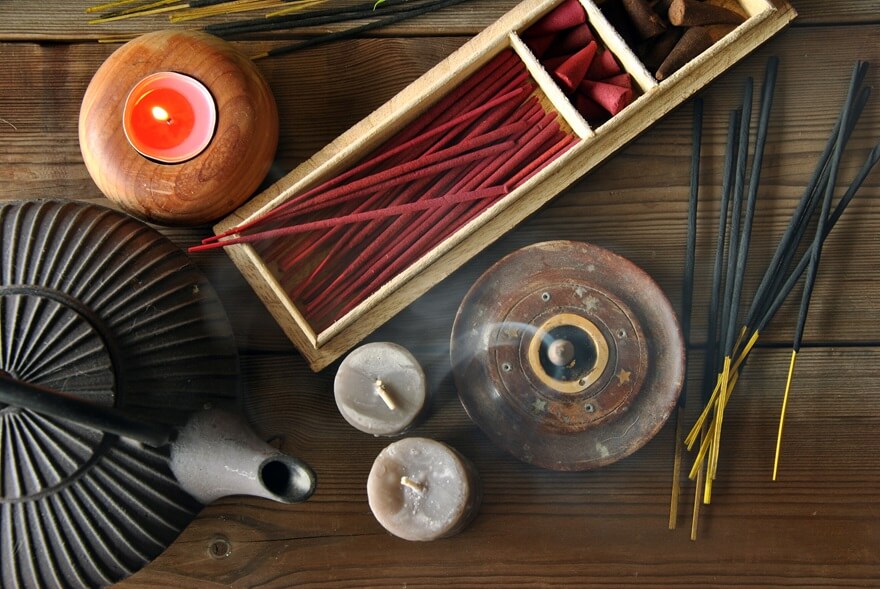
Direct burning incense is sold quite commonly in Japan.
You can find it at convenience stores, drug stores, and home goods stores (such as Nitori, Muji) or even at 100 yen shops.
If you want to buy indirect burning incense or scented bags, you can go to specialized incense stores or buy through online sales sites (like Rakuten, Amazon).
When buying online, it is best to choose reputable brands to ensure you receive quality products.
Suggest 5 famous incense brands in Japan
- Nippon Kodo (日本香堂)
https://www.nipponkodo.com/ - KUNGYOKUDO (薫玉堂)
https://www.kungyokudo.co.jp/en/ - KUNJUDO (薫寿堂)
https://www.kunjudo.co.jp/ (Japanese) - SHOYEIDO (松栄堂)
https://www.shoyeido.co.jp/english/ - hibi (hibi)
https://hibi-jp.com/en/
Suggested 3 traditional Japanese scents
If you love traditional Japanese fragrance, choose incense that contains 3 types of fragrant wood: Kyara wood, agarwood and sandalwood.
Characterized by a natural, gentle and classic scent, they will give the space around you a traditional Japanese atmosphere.
Conclusion
There are 3 types of Japanese incense: direct burning incense, indirect burning incense and non-burning incense.
For those who want to enjoy incense quickly and easily, start with directly burned incense.
For indirect-burning incense, the method of enjoyment may be a bit more intricate, but in return, you get to experience a subtle and profound fragrance.
Finally, if you prefer simplicity and convenience, choose non-burning incense, like these scented bag. You can put a scented bag in your bag, wardrobe or in your car to always be surrounded by a pleasant scent.
Hopefully this article helps you better understand Japanese incense and find a scent you love.

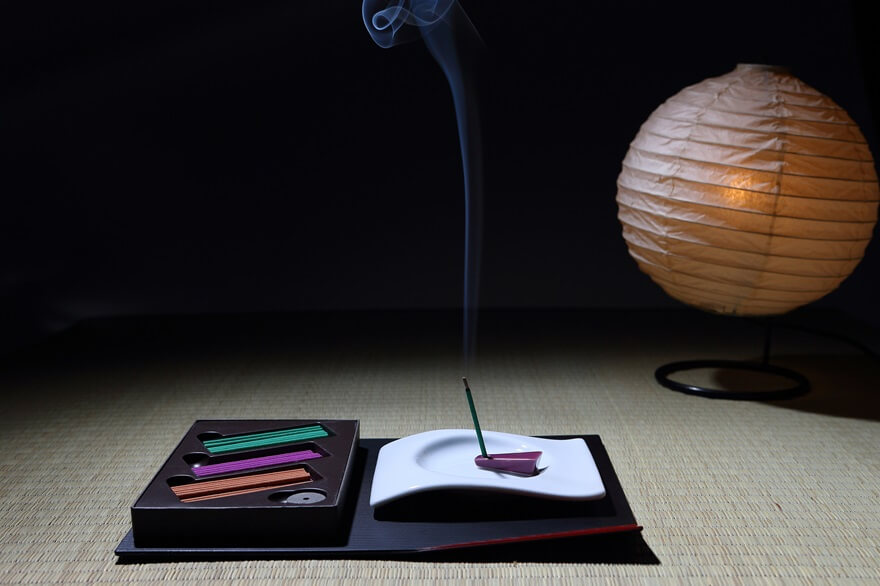
Comment